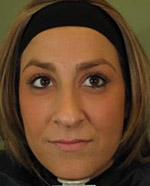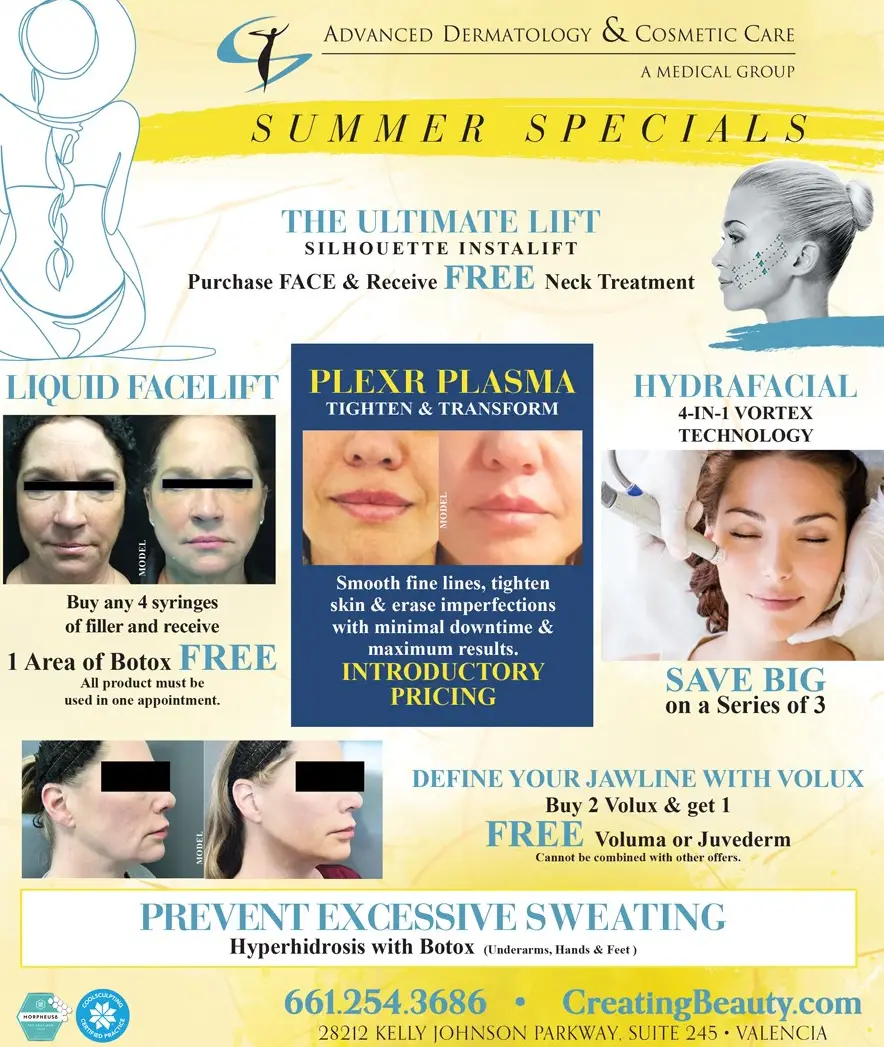Archive for October, 2011
What is fractionated laser?
By Bernard I Raskin, M.D.
When microdermabrasion, chemical peels, or photofacials aren’t giving you the results you want, your answer may be fractional laser treatment. What is fractional laser? Years ago the gold standard of treatment was traditional laser resurfacing done with a Carbon Dioxide (C02) laser. While this laser provided outstanding results, it also had a long period of recovery that included bandages, crusting, prolonged redness, and swelling. Then less invasive resurfacing lasers evolved such as the Erbium. While these lasers provide very good results for skin smoothing, texture, wrinkles and pigment, the results were not as dramatic and didn’t provide skin tightening like the C02. So “fractionated” CO2 technology was developed. What this means is that the laser light is broken up into tiny separate dots which then penetrate the skin in this “fractionated” pattern. Spaces of untreated areas are left between the dots of laser light which makes healing faster and easier. Turns out this new dotted pattern gives almost the same result (and in some cases better) than older systems with a much faster and easier recovery. This fractionated CO2 pattern has many variables that influence results and determine how many treatments are needed. For example, how close the dots are to each other, how big the dots are, how many dots to make, how deep do they go. Because of these variables, it’s best to go to an office that is highly experienced with lasers. There are also several types of lasers making this fractionated pattern and some require multiple treatments to achieve significant results which can mean higher costs. In our office, we have chosen the QuadraLase (C02), because of superior results with the fewest treatments in enhancing skin tone and texture, reducing the effects of the sun and aging on the skin, smoothing lines and wrinkles, skin tightening and improving acne scars. Treatments range from mild to aggressive based on the extent of the rejuvenation you are looking for. All lasers can have complications and experienced laser surgeons have the education and experience to reduce risks, so be very careful whom you choose to laser your face and/or body. This is a medical procedure and just because a facility advertises a laser doesn’t attest to level of experience in its use. If someone other than the physician is performing the laser, we recommend checking on the physician supervision. Restorative lasers can be amazingly beneficial with superb results and minimal downtime. The new fractionated CO2 lasers are awe inspiring technology.
For more information please contact Advanced Dermatology & Cosmetic Care at 661.254.3686 or visit www.CreatingBeauty.com.
We can fix that!
By Bernard I Raskin, M.D.
Just about everyone has experienced an acne breakout, and most people know that a dermatologist can prescribe medications to combat this problem. But are you aware of the many skin issues that can be easily treated by your dermatologist? Below are some common skin disorders and their treatments.
A dull lifeless complexion can age you beyond your years. This can be easily treated with a combination of products and esthetician services. Retinol is an essential part of a successful anti-aging program. Retinol helps stimulate new collagen to form. This thickens the skin and helps erase wrinkles. Retinol also helps the surface cells function better by removing the dull quality so the skin appears brighter.
Esthetician services work hand in hand with your product regimen. A bi-monthly Microdermabrasion will help exfoliate away the dead skin cells and stimulate blood flow and collagen production in the skin. Try a chemical peel to promote healthy, youthful and smoother looking skin.
Another common skin problem is redness; whether it is diffused all over the face, a specific red spot, or broken blood vessels, this common condition can be treated easily with little to no downtime. Using a specially designed light, the V Beam Laser targets the affected area, increasing the temperature of the red blood cells in the vessel, causing the vessel wall to close.
Brown pigment in the skin can create a mottled or discolored appearance to the skin. This brown discoloration can be treated in a number of different ways. The least invasive treatment would be a topical lightening cream. This cream can be used alone or in conjunction with another treatment such as IPL. IPL therapy consists of a series of 4 to 6 treatments, in which an intense flash of light is emitted similar to the flash of a camera. IPL passes through the top layer of skin (epidermis) and penetrates to the deeper layer (dermis) where blood vessels, pigment cells, and collagen are found. IPL treatments of freckles or brown spots usually require no downtime, and you can return to normal daily activities immediately. Over a 2 to 3 week period after treatment, brown spots or freckles will flake off.
These are just a few of the most common skin troubles we are faced with but that are easily treatable. See your dermatologist today for more information and expert guidance.
For more information contact Advanced Dermatology & Cosmetic Care at 661.254.3686 or visit www.CreatingBeauty.com
The Vitamin D Dilemma—The Good and Bad of Sunlight
By Bernard I Raskin, M.D.
Recently controversy emerged about whether sun exposure is necessary for creating Vitamin D. Vitamin D is naturally produced in the body by Ultraviolet sun light exposure. Vitamin D is necessary for your health and may prevent prostate, colon, breast, and other cancers. Vitamin D is essential for bone health, immune system functioning, and more. Just 5-10 minutes of UV (ultraviolet) exposure from the sun two to three times a week over a small area of skin is sufficient for most Caucasians to create vitamin D. Further exposure actually destroys the vitamin, decreasing Vitamin D levels. Keep in mind that even when you wear a high SPF sunscreen, some UV reaches the skin, and this may be plenty for fair-skinned individuals.
But sometimes the cure can be worse than the condition. All unprotected UV exposure contributes to cumulative skin damage, accelerating aging and increasing our lifetime risk of skin cancer. UV is an officially recognized environmental carcinogen. There are about 2 million skin cancers diagnosed yearly in the United States mostly caused by sun exposure. Sun exposure also causes wrinkles, brown spots, leathering and sagging.
You can obtain Vitamin D largely from food or supplements while following a skin cancer prevention program. There are effective almost effortless alternatives to sun exposure for achieving adequate Vitamin D. A diet containing Vitamin D fortified orange juice or milk is helpful. Salmon and other fatty fish naturally contain vitamin D. Or simply taking daily multivitamins containing 600 units of Vitamin D.
So 5-10 minutes is sufficient to produce vitamin D. But skin degeneration begins after just 2 minutes of sun!!! That means permanent destruction of collagen under the skin begins in 2 minutes. Collagen is the supporting framework for your skin—good full collagen keeps the skin from wrinkling. And once that collagen support degenerates, it’s impossible to completely rebuild that framework ever again. Even worse is the collagen destruction that began after 2 minutes of sunlight may continue for hours even though you only had a 2 minute exposure!! The reason is that 2 minutes of UV exposure causes skin cells to release a chemical known as proteinase which grinds away at the collagen structure for hours. Fortunately we have effective methods to reduce proteinase activity, and we suggest you contact your dermatologist for more information on preventive techniques. But remember, 2 minutes is the magic number.
For more information contact Advanced Dermatology & Cosmetic Care at 661.254.3686 or visit www.CreatingBeauty.com
Treating Melasma “THE MASKED BANDIT”
By Bernard I Raskin, M.D.
Melasma shows up as brown spots or splotches on the forehead, cheeks, jaw line or upper lip that is triggered by hormones and light. Hormones stimulate the growth of cells that make brown pigment (melanocytes). And light stimulates the production of even more brown pigment (melanin). Melasma can appear when a woman’s hormones change, whether through pregnancy, oral contraceptives, or hormone replacement therapy after menopause. So you have two problems: too many cells making brown pigment and light constantly stimulating them.
If you get melasma from postmenopausal hormone replacement and can’t stop the HRT for health reasons, then use sunscreen, stay out of the midday sun, and keep your hat on. If you have melasma from hormones or prior pregnancies, see your dermatologist first. Women of color are prone to melasma, and it is a significant problem for many. But people of any skin type can get melasma. Melasma can be difficult to treat. Talk to your dermatologist about prescription “bleaching” creams and other treatments such as Peels and Microdermabrasions. All these simple measures will help to limit the blotchiness of melasma.
Be sure to apply a sunscreen with a SPF fifteen or greater with zinc, every single morning and reapply it frequently. Try using ColoreScience Sunforgetable mineral powder SPF 30 OR 50 for convenient reapplication throughout the day and for use over makeup. You should also wear a hat. You will not have success treating melasma if you don’t block light. Every time ultraviolet light hits these brown spots it makes them worse. Your sunscreen must block UVA as well as UVB rays.
Prescription “bleaching” creams-These creams don’t really “bleach” anything. Instead, they block the production of excess pigment (melanin) in the skin. The pigment-making cells are like little factories that churn out microscopic, brown granules. The bleaching creams partly shut down the factory so less brown pigment granules are made.
Peels and microdermabrasion – Both peels, and microdermabrasion are done in a series, they work by increasing cell turnover. This speeds the transit of that unwanted pigment out of your skin. These treatments are helpful for all types of pigment issues regardless of their origin.
For more please contact Advanced Dermatology & Cosmetic Care at 661.254.3686 or visit www.CreatingBeauty.com.
The Difference between Male & Female Skin
By Bernard I Raskin, M.D.
When it comes to skincare, everyone is not created equal. Both men and women should be concerned with the health and status of their skin, but men also need to be careful as to what types of products they are using and how it will react with their skin. The first step towards proper skincare is to know how male and female skin functions and how they differ.
Because the vast majority of skincare customers are women, it’s no wonder that everyone young and old is aware of how a woman’s skin functions, ages and reacts to various beauty products. But what about male skin? A man’s skin is about 20% thicker than a woman’s and is usually firmer because it is richer in collagen and elastin levels. This is why many men tend to age without as many deep-set wrinkles and fine lines as women, although the success of aging gracefully for any man also lies in how well he has taken care of his skin over the years.
As a result of how the male skin is structured, it may to be more oily and prone to breakouts than female skin. In terms of skincare, deep cleansing is a must for men. By maintaining a daily deep cleansing routine, men can continue to enjoy a clear and healthy complexion. Even though men aren’t as prone to the signs of aging like women are, that doesn’t mean they are completely immune. Men should also incorporate AHA’s and BHA’s (Alpha and Beta Hydroxyls Acids) in to their regimen to help avoid ingrown hair’s caused by shaving.
Despite these differences in male and female skin, it often does not matter what kind of skincare products are used. It is perfectly fine for a man to use a skincare product designed for female skin. At Advanced Dermatology and Cosmetic Care, Dr. Raskin offer’s products that cater to the thicker, oilier and larger pores of a man’s complexion. Please feel free to come in and speak with one of our experienced cosmetic staff members.
For more please contact Advanced Dermatology & Cosmetic Care at 661.254.3686 or visit www.CreatingBeauty.com.
Sun Safety
By Dr. Bernard I Raskin
By now almost everyone has been warned about the damage the sun can cause to your skin. But do you really know how to protect yourself properly? Wearing your sun screen at the beach or pool or on a hot sunny day is a start. But what about all the other times you are exposed to the sun’s harmful rays? UV ray exposure is accumulative, meaning even the small amount of time it takes to walk to your car, drive to school or work, or even sitting near a window, adds up over time.
There are two types of UV rays, UVA and UVB. Both can be harmful to your skin. UVA rays can pass through window glass and penetrate deep into the layers of the skin contributing to premature aging. UVB rays are the primary cause of sunburn; the rays penetrate the outer layer of the skin causing damage to the cells. Both UVA and UVB rays can play a part in the formation of skin cancer.
Don’t think that cloud cover provides you with any protection from the suns UVA rays. UVA penetrates the clouds and continues deep into the skin to cause long-term damage. A higher SPF is recommended to ensure full protection for the entire time you are exposed to the sun. Re-application is always recommended even with a waterproof formula when excessive sweating or water exposure is present.
Don’t skimp when applying your sunscreen. Most people only apply half as much sunscreen as needed, spreading it to thinly and reducing the effectiveness of the product by 50%. The average size adult should be using one full ounce of sunscreen over their entire body. Sunscreen should always be applied at least 45 minutes prior to sun exposure to allow the sunscreen to be fully effective.
Try to avoid sun exposure from 10am until 4pm that is when the suns damaging rays are the strongest. If you have to be outside during this time try and cover up as much exposed skin as possible. A wide brimmed hat, sunglasses, long sleeves and pants are recommended.
Keep an eye out for any changes in your skin, like new spots or changes in existing spots. See your dermatologist annually for a full body check.
For more information contact Advanced Dermatology & Cosmetic Care at 661.254.3686 or visit www.CreatingBeauty.com or MohsSurgeryCenter.org.
Skin Resurfacing
By Bernard I. Raskin
Looking to get your glow back? Skin resurfacing just might be the solution. Time, sun damage, free radicals, all of our skins enemies can steal that fresh faced glow that makes us appear more youthful. There are many different ways to resurface the skin and choosing a method can be overwhelming. Depending on what kind of damage you have or how severe the damage is can help in the decision making process.
Microdermabrasion is a great treatment for almost anyone. This treatment is a physical exfoliation that gives a light polishing to the skin helping with pigmentation, acne, scarring, and superficial lines.
The Vitalize Peel is an intensive Retin-A peel that can achieve dramatic improvements in superficial lines and congested pores, restoring your skins natural radiance. This unique treatment is excellent for clearing acne breakouts, and helps to lighten age spots, leaving your skin smooth and soft to the touch.
The Melanage Peel is a Hydroquinone and Retinoid masque for the treatment of hyperpigmentation or pigmented blemishes on the skin. It is a superficial peel designed to improve the texture and appearance of hyperpigmented skin and involves a masque and an at-home regimen.
The Erbium laser removes the top layers of skin, reliably, predictably, and precisely. By removing the top layers, the skin is smoothed and a softer texture results. Removing the top layers also stimulates new collagen to form under the skin helping to permanently improve wrinkles. Color problems are also improved. This light laser zaps away a few fine layers, leaving behind a softer, smoother skin.
The CO2 is possibly the best treatment to address the most severely damaged skin. This laser treats pigmentation, lines and wrinkles, tightens skin and stimulates collagen. CO2 laser resurfacing is also good for acne scars. CO2 laser is used to remove areas of damaged or wrinkled skin, layer by layer. The procedure is most commonly used to minimize the appearance of fine lines and wrinkles, especially around the mouth and the eyes. However, it is also effective in treating facial scars or areas of uneven pigmentation.
All of these treatment options will help restore a more youthful appearance, and to keep your skin fresh and glowing we always recommend protecting the skin from the sun with sunscreen and protective clothing.
For more information please contact Advanced Dermatology & Cosmetic Care at 661.254.3686 or visit www.CreatingBeauty.com.
Skin Lightening Agents
By Bernard I. Raskin, M.D.
As long summer days come to an end some of us may be noticing a few new brown spots where there weren’t any before. First and foremost we always suggest you see your dermatologist to determine the nature of these spots. If in fact these are diagnosed as hyperpigmentation or melasma then a skin lightening program can help fade these spots away.
There are several ingredients that help remove undesired pigment. Hydroquinone has been the most widely and successfully used skin lightening agent for the treatment of hyperpigmentation. Hydroquinone (HQ) treats hyperpigmentation on a cellular level by inhibiting tyrosinase. Tyrosinase is a copper-containing enzyme in plant and animal tissue that catalyzes the production of melanin, or dark pigments found in the skin. HQ is available over the counter in strengths up to 2%, prescription strengths of HQ are usually 4% or higher as determined by your physician.
Kojic acid is a non prescription strength tyrosinase inhibitor, it is used both topically as a skin lightening agent and is often more effective when used in combination with other ingredients such as vitamin C.
Derived from natural sources such as fruits and vegetables, topical vitamin C is another great ingredient to look for in a skin lightening agent. Vitamin C and stable vitamin C derivatives such as L-ascorbic interfere with pigment production as well as having the ability to lighten different types of pigmentation.
Glycolic acid is another important cosmeceutical (a cosmetic product claimed to have medicinal or drug-like benefits) that has skin lightening properties. Glycolic acid shortens the cell cycle so that pigment is lost more rapidly. Peels with a high concentration of glycolic acid that remove the superficial layers of the skin have been found to enhance the penetration of other skin lighteners such as hydroquinone.
As skin lightening creams work well for most people, sun exposure can significantly reverse the effects. It is strongly recommended that you apply sun screen daily and wear protective clothing when possible.
While all theses agents produce skin lightening affects on their own, studies show that using them in combination can be more affective. Skin lightening creams containing these ingredients are available in prescription and non prescription strengths. See your dermatologist to determine if a skin lightening cream is right for you.
For more information please contact Advanced Dermatology & Cosmetic Care at 661.254.3686 or visit www.CreatingBeauty.com.
Skin Cancer Awareness
By Bernard I. Raskin, MD
There are types of minor skin cancers, and one major type. The minor skin cancers are known as Basal Cell and Squamous Cell cancers. The major skin cancer is Melanoma. Almost all skin cancers are due to sun exposure.
Basal Cell is the most common type of skin cancer, and approximately 2 million people develop one each year. People who get one basal cell cancer are more prone to develop additional ones. These occur on any sun exposed area, although they can occasionally develop on non sun exposed regions. They are felt to be related to sun exposure that occurred many years ago. They have characteristic qualities of a pearly bump with tiny blood vessels on it, but are often less obvious so biopsies are often necessary. Basal Cell won’t metastasize, but it grows locally and sends out roots into the tissue under the skin.
Squamous Cell Cancer is less common. This cancer increases in frequency with increasing sunlight over your lifetime. That means the sunlight you get today or tomorrow contributes to new cancers. Therefore, avoiding sunlight reduces your risk of squamous cell cancer developing. In Australia a study showed that people who begin regularly wearing sunscreens and avoiding sunlight had 60% fewer skin cancers over the next five years compared to people who didn’t change their habits. So squamous cell carcinoma risks can be reduced at any age by preventing sunlight. That is good because squamous carcinoma can occasionally metastasize.
Melanoma is the major skin cancer. It too is seen more frequently in sunny climates or with an individual history of significant sun exposure. Caught early it is almost 100% curable, but caught after it has developed roots, and the cure rate drops to 30%. A person dies in the US about every 8 or 10 minutes from melanoma (36,000 deaths per year). This makes melanoma one of the top several skin cancers causing death, and most of the deaths are preventable especially if the diagnosis is made early.
For more information regarding skin cancer awareness please contact Advanced Dermatology & Cosmetic Care at 661.254.3686 or visit www.CreatingBeauty.com.
Sculptra Aesthetic “Anti-age for the modern age”
By Bernard I. Raskin, M.D.
At Advanced Dermatology and Cosmetic Care our expertly trained staff uses Sculptra in a very unique and cutting-edge manner. Over the past decade, we have learned that facial aging is not just sagging but rather a combination of volume loss, gravitational laxity, and skin changes. Sculptra is a collagen stimulator whose properties allow for a natural, gradual and discreet facial rejuvenation, which is why it is so popular among celebrities. Unlike other fillers, Sculptra works by stimulating the body to produce its own collagen that reverses the signs of aging by restoring facial volume loss. Sculptra is used to contour and reshape hollows and depressions in the cheeks, temple, laugh lines and jaw lines (jowls, marionette). At Advanced Dermatology and Cosmetic Care our staff has injected numerous patients with Sculptra and has had tremendous outcomes with great patient satisfaction in men and women.
The injection procedure is completed in office and typically requires three to six treatments spaced about a month apart. Each treatment usually takes around 20-30 minutes, and allows the patient to return home or to work almost immediately after the treatment. Most normal activities can be resumed as well.
Hands are a telltale sign of age. By utilizing a combination of Sculptra, skin resurfacing and pigment targeting lasers, we can reverse decades off your hands restoring youthful volume, removing unwanted pigment and softening the look of tendons and veins. The rejuvenative effects can be particularly dramatic.
We are pleased to offer this new facial anti-aging option in our office. Please call us now to schedule your complementary consultation to learn more and discuss if Sculptra Aesthetic is right for you.
For more information contact our office at 661.254.3686 or visit our website at www.CreatingBeauty.com.














